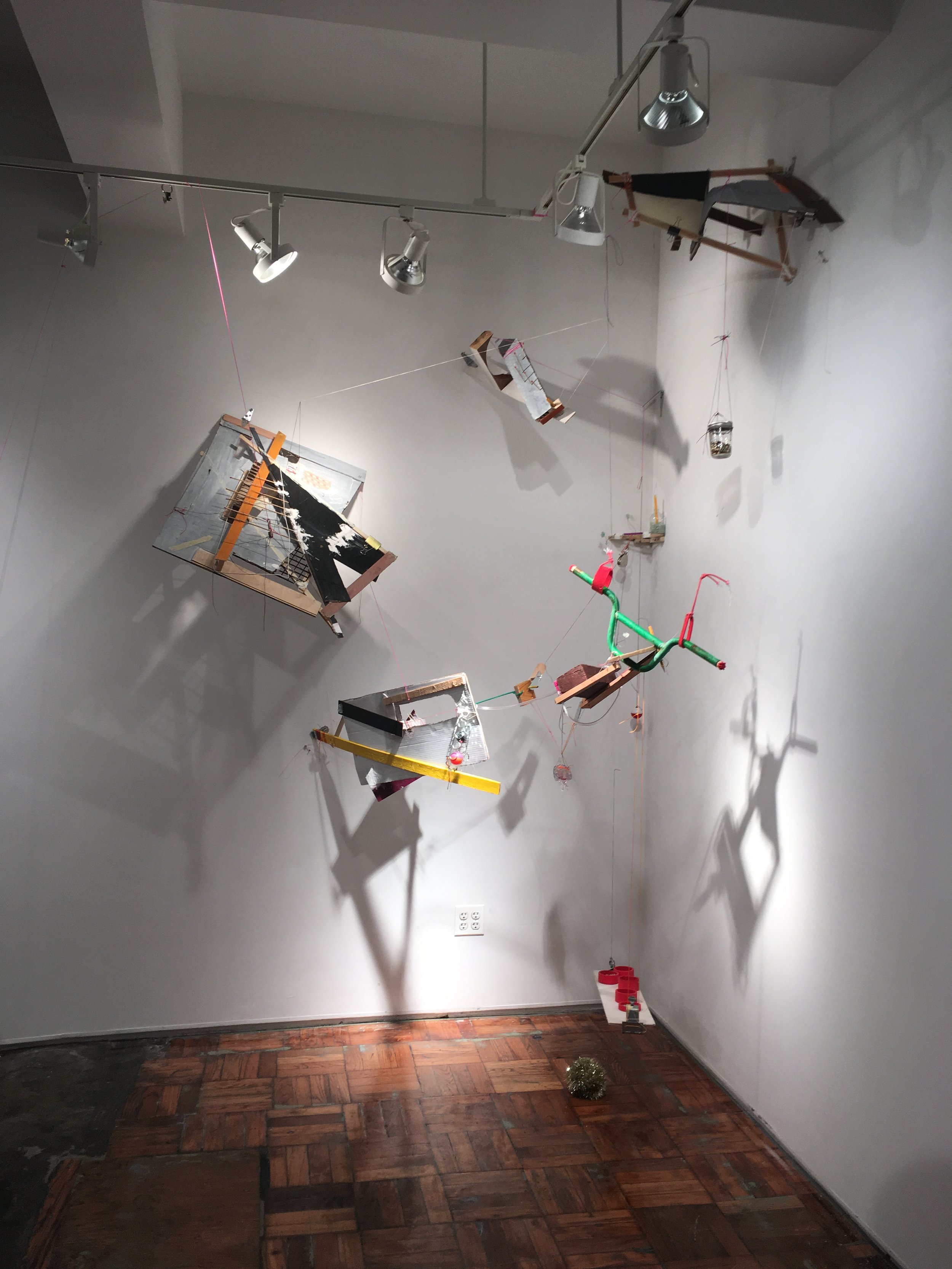Haring Love, part I: evolution of the Keyhole Torus in tribute to Keith Haring
Nate Sheaffer
September 6-28,2019
> The Lab

Nate Sheaffer
September 6-28,2019


June 8 - July 23
ARTIST STATEMENT
Guided by the idea that consistent small actions create significant impact, these small sculptures grow the body of work over time. This process of creating over months or years is meant to also tie to the notion that our small actions affect the world beyond us. I encase, cover, stitch or layer found, industrial, cast-off or surplus materials to create objects or images that are not easily identified as natural or man-made. The pieces begin without an initial plan but instead rely on an intuitive response to the materials and a search for forms that feel familiar. Bold color and the process of building up encaustic wax to transform industrial materials has been central part of the visual outcome and process of this series. The small individual pieces have grown to a considerable collection that offers endless configurations and groupings to explore different relationships. Each piece is marked with a numbered copper tag to indicate the order in which it was created. Studying, organizing and categorizing the objects by color, form or other characteristics during the exhibitions becomes a bit of a process like a scientist’s study of plants, animals or fungi led by a curiosity to see the similarities and differences that occur over time in the process of creating.
ARTIST BIO
Kelly Sheppard Murray is a Raleigh, North Carolina artist, educator and designer with BFA, and MFA degrees from UNCG and ECU respectively. Murray’s career as an artist has emphasized three-dimensional design and fabrication for nature, health, science, and history museums, although her personal practice includes a wide array of media and processes.
While maintaining professional practice in design and fine arts, Murray teaches 2D & 3D design, painting, sculpture and art appreciation at Wake Technical Community College. In 2014, Murray was awarded faculty rank as Associate Professor at Wake Technical Community College
Murray is a 2018 recipient of the International Encaustic Artists Emerging Artist Grant. Other recognitions include being selected as a 2016 the Artspace Regional Emerging Artist in Residence, as well as a 2000 and 2012 recipient of Regional Artist Project Grant by the United Arts of Raleigh and Wake County. She now maintains a tenant studio at Artspace in order to be able to continue sharing work and having conversation with the public.
Recent exhibitions include a solo exhibition Kelly Sheppard Murray: Sculptures at Wilma Daniels Gallery, Wilmington, NC; Knoxville Tennessee’s Dogwood Arts 2018 Regional Arts Exhibition, Raleigh Fine Arts Society’s 2018 North Carolina Artists Exhibition, Artspace’s 30th Anniversary Retrospective Juried Exhibition.

May 3 - 31
ARTIST STATMENT
Suh will construct multiple pentagonal and hexagonal boxes that can be arranged next to one another on a wall in appropriate patterns symbolizing ethnic enclaves. Her focus is the assimilation process of immigrants of color and their formation of ethnic concentrations in the settled areas. Immigrants often cluster in close geographic areas and develop migrant networks, thus forming ethnic enclaves. The transitional phase of learning a new language and social norms of the country restricts immigrants’ activities within the enclave and subsequently sequesters them from the larger societal context. These constructed ethnic enclaves act as havens where their heritage can be preserved and fortified.


Eddie Lohmeyer
Computer-Generated Imagery, 1908
November 2 - December 28



Nicole Asselin
Exhibit design in collaboration with Cecilia Mouat
June 6 - July 28
Biodesign is an emerging movement that addresses designs’ connection with the natural world. Essential within the biodesign lexicon are mycelium composite materials. Mycelium is the vegetative, filamentous part of a mushroom, usually found underground. When grown within a nutrient rich substrate, the mycelium and the substrate bind together forming a stable, easily regenerated material. This growing process can be tailored to express a wide range of properties and affordances applicable for design applications. Mycelium composites are currently in use commercially as viable replacements for plastics and packing material as well as insulation, foam and leather.
This emerging design medium utilizes a transdisciplinary lens that expands the essential and timely conversation of designs’ relationship with nature and sustainability. It moves beyond the antiquated approach of simple resource conservation, developing a paradigmatic shift- inviting new ways of making that promote life-giving cycles and challenge dominate modes of production and consumption. These composite materials work with biological events as essential design components – not designing like nature, designing with natural processes. In conversation with the current concerns surrounding environmental issues, contemporary discourse in design is asking how to generate new materials and new cycles of use. Mycelium-based materials actively bring nature, science and design together to reimagining ways of producing and valuing materials.


Project Statement
For the past months I immersed myself in stories of Muslim women, learning what inspires us to resist and to exist in these times of national chaos, global catastrophes, and day to day struggles. My resistance purses are portraits of contemporary human struggles and triumphs. They are empowering, bold, and collaborative, fueled by our collective passions; they serve as a documentation of an era in which voices are silenced, yet, remaining silent is not an option. This is an ongoing project that seeks to re-contextualize how we view protest, and allows insight into the hearts and minds of a diverse community of women. And I couldn't have thought of a better partner than photographer-friend Caroline Cockrell to join me on this journey called The Protest Purse.
